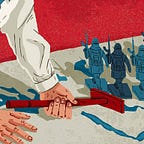German Reunification
The Germans celebrated the day of the reunification of Germany on October 3. This is a difficult and significant day of their history and I would like to remember how it was.
In a peaceful revolution that began in 1989, the East Germans overthrew the socialist regime. The leaders of the state have lost their posts. At the same time, not a single shot was fired, not a single person was injured. On that day, October 3, 1990, the GDR officially joined the FRG. From now on, the Germans again began to live in one state.
Federal President Richard von Weizsäcker, in his speech that night before the fireworks started, drew parallels between the unity of Germany and the unity of the entire European continent. “We Germans are aware of our responsibility and will serve the cause of peace in a united Europe,” he said.
In the days of German reunification, politicians had no time for sleep.
Rudolf Seiters, then head of the Federal Chancellor’s Office, accompanied German Chancellor Helmut Kohl for 12 months prior to this event at numerous events. On the night before German reunification, Rudolf Seiters had no time for sleep.
“I recalled negotiations on permission to travel westward for East Germans who had taken refuge at the German embassy in Prague, on Hans-Dietrich Genscher’s appeal from the balcony of the Prague embassy, on my speech to the Bundestag on the fall of the Berlin Wall, and, finally, about the incredibly important speech of Helmut Kohl before the Frauenkirche church in Dresden,“ says the former head of the Federal Chancellor’s Office.
Germany is one: an exciting change
October 3, 1990 was less than a year after the fall of the Berlin Wall. For the politicians of both German states, these were days of difficult negotiations and important decisions. The structure of power changed very quickly in the GDR. The deputies of the People’s Chamber, elected in March 1990, created a federal state structure. The federal lands in its structure could now be combined with the western lands into one state. In addition, the Ministry of State Security was disbanded and the FRG stamp was put into circulation.
Such a rush was understandable. Ever since movements to topple socialist regimes emerged in Eastern Europe, the entire continent has been in unrest. Citizens everywhere were demanding freedom of movement and political reform.
Perestroika and glasnost in the USSR became the sparks from which powerful protest movements flared up in all Eastern European states. “All that remained was to carefully manage the process, which was perceived with anxiety and fear not only in Moscow, but also in Western Europe,” recalls Rudolf Seiters.
Unification of the German Democratic Republic and the Federal Republic of Germany: fears and skepticism
The desire of the Germans to unite the GDR and the FRG was perceived in European capitals not without skepticism. The neighboring countries were frightened by the prospect of having a strong and large Germany in the center of the continent. British Prime Minister Margaret Thatcher led the camp against the reunification. At first, French President François Mitterrand also opposed it. But German politicians managed to convince him.
In the Soviet Union, the development of events in neighboring states also provoked opposition. The former superpower was increasingly losing influence in the Warsaw Pact countries, which were considered a counterweight to NATO and the capitalist social order. In the West, they feared a coup against the General Secretary of the CPSU Central Committee Mikhail Gorbachev. In this case, the USSR’s consent to the reunification of Germany would be in question.
The Germans were lucky. After all, if the process of reunification began a little later, everything could be different. The world’s attention would shift to Iraq, which in early August 1990 occupied neighboring Kuwait and announced its annexation. And in the summer of 1991, the world held its breath again: an attempted putsch was carried out in the Soviet Union. If these events had happened a year earlier, the process of German reunification would have become more complicated and, in all likelihood, would have lasted longer.
All-German Bundestag
On the Berlin streets, they have not yet managed to clean up the garbage left after mass festivities and fireworks, and the deputies of the Bundestag and the People’s Chamber of the GDR have already gathered for a joint meeting. Two months later, the first all-German parliamentary elections since 1932 were held. The Christian-liberal coalition led by Helmut Kohl won a landslide victory.
